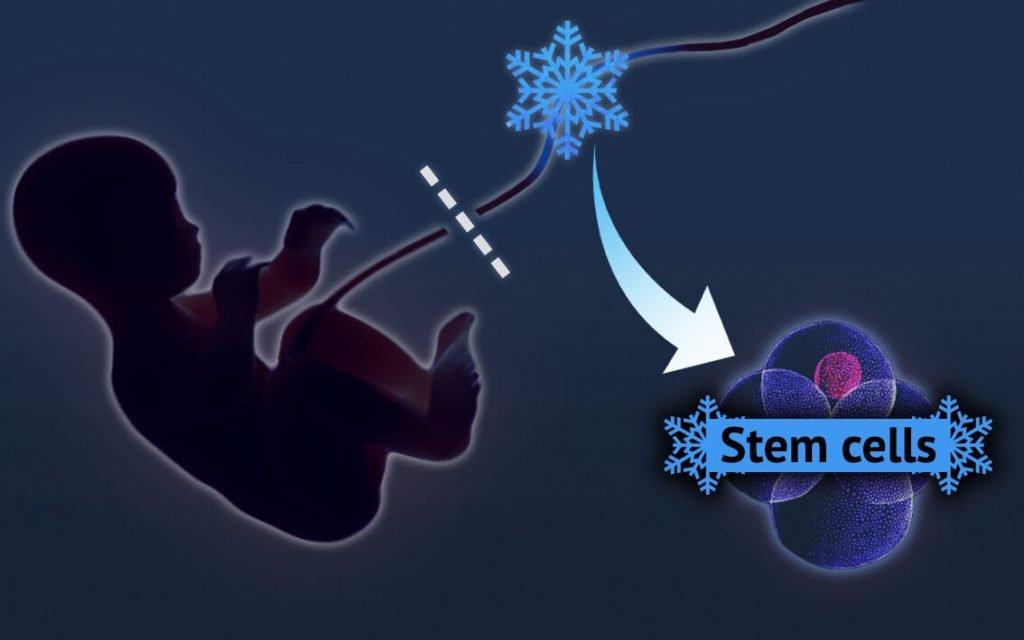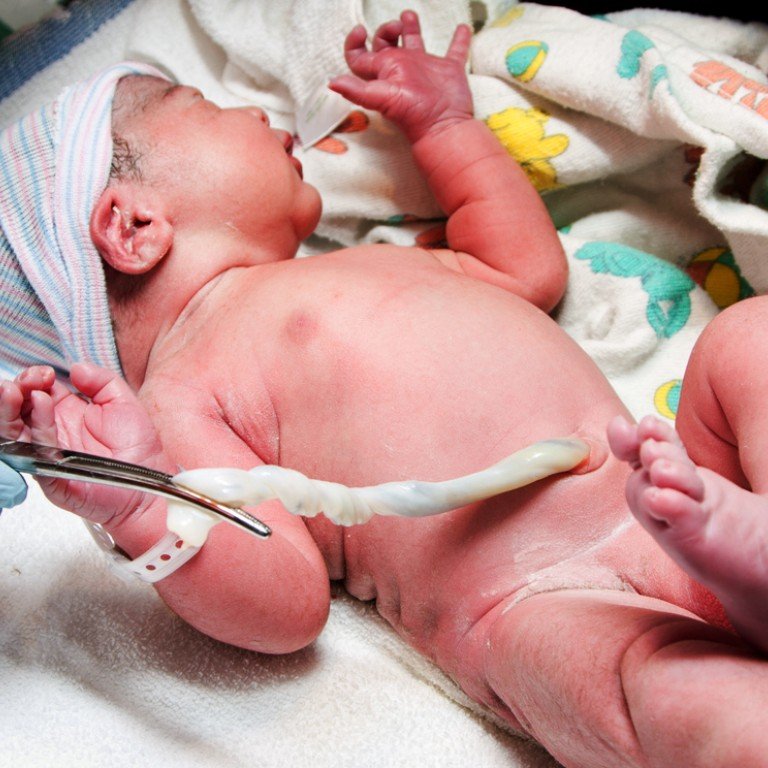Umbilical Cord Stem Cell Banking | Benefits & Side Effects | Advantages and Disadvantages |Diseases Treated | PLURIPOTENT & MULTIPOTENT Cells, Who can use the Same Cord Blood Stem Cells- The advances are incredible and they have already arrived. In honor of these and many other incredible achievements, enjoy Stem cells which will be the driving force of this next revolution. So what are stem cells?
Contents
What are Stem Cells?-

To clear all the myths, first, you should know about the correct answer to this.
Stem cells are special human cells that have the ability to develop into many different cell types, from muscle cells to brain cells. In some cases, they also have the ability to repair damaged tissues.
NOW, WHAT DO THAT UMBILICAL CORD STEM CELLS MEAN?
Actually, when a baby is born he has an umbilical cord that is attached to the mother and fetus. That baby’s Cord blood is a rich source of stem cells, that are the building blocks of our bodies, which can act as a “self-repair” kit. Cord blood stem cells are genetically unique and are a 100% match for the same child.
It’s a once-in-a-lifetime opportunity to help protect your family’s long-term health. They can be very useful as they help us understand and treat a range of diseases, injuries, and other health-related conditions. Their potential is evident in the use of blood stem cells to treat diseases of the blood and body.
It is a therapy that has saved the lives of thousands of children with leukemia and can be seen in the use of stem cells for tissue grafts to treat diseases or injury to the bone, skin, and eye.
WHAT IS UMBILICAL CORD BLOOD OR CORD TISSUE BANKING?
After your baby is born, stem cells from the cord blood and tissue can be collected and saved for potential future use. This process is known as banking. Cord blood banking is the process of collecting the cord blood and extracting and cryogenically freezing its stem cells and other cells of the immune system for potential future medical use.
You may save your baby’s cord blood in a private bank or donate it to a public bank. Private banks charge a fee to store cord blood for your family’s use. The umbilical cord fluid is loaded with stem cells. They can be proved very useful in difficult times in the future.
They can treat cancer, blood diseases like anemia, and some immune system disorders, which disrupt your body’s ability to defend itself.

WHY WE SHOULD CONSIDER STEM CELL BANKING?
- This can act as Future Insurance for Child. As the banking of cord blood provides safe and effective options to parents for saving their child’s health prospects in the future.
- The provision of stem cells from a child could be a source of medical assistance to siblings, parents, or any other family member, due to inheritance similarities. One stem cell can save the lives of many members who have the same genome.
- It can be very helpful in resolving many of the harmful diseases. The most extensively used stem cell treatment is hematopoietic stem cell transplantation, bone marrow transplantation, to treat certain blood and immune system disorders or to rebuild the blood system after treatments for some kinds of cancer.
- Some bone, skin and corneal injuries and diseases can also be treated by grafting or implanting tissues, and the healing process relies on stem cells within this implanted tissue.
- Nowadays cord blood stem cells are also used for increasing the strength of the immune system for better treatment outcomes and recovery.
- It is very safe, The banking of cord blood is totally a risk-free procedure for the baby and the mother. The method does not give any post-procedure threat to the mother or infant baby and holds a total hazard-free guarantee.
- Their uses are not for a short period it can be stored prolong, Apart from the easy collection of cord blood, it can be stored for almost 15 years.
- The stem cells from cord blood hold the uplift advantage of greater acceptability, decreased rejection, and mismatching concerns than bone marrow stem cells.
SIDE EFFECTS OF CORD STEM CELL BANKING-
Despite the fact that these stem cells are special human cells that have the ability to repair damaged tissues but at the same time, they also face some side effects related to the stem cell transplant and preserving stem cells for a long time in banks.
- Each element of the protocol in terms of preserving solution, freezing, storage, warming has the potential to damage the cells if not performed properly. So everyone working there should be trained as to the importance of those elements and the manner by which they should be properly performed.
- Current methods of preserving cells are very labor-intensive and operator dependent and may require equipment that is not easily obtained.
- You will have low blood cells counts after a stem cell transplant. A stem cell transplant is very complex. It can take 6 to 12 months or longer for your blood counts to be back to normal and your immune system to work well.
- Stem cell transplant increases the risk for bruising, bleeding, anemia, and causes fatigue, dizziness, shortness of breath, and weakness. Bacterial infections are the most common. Viral or fungal infections can also happen.
- Graft-versus-host disease (GVHD) might happen after an allogeneic stem cell transplant. Healthy stem cells from the donor attack the cells of the recipient. This GVHD can permanently damage an organ.
- It also includes damage to the brain that results in problems with mental function, and these CNS problems include sleepiness, poor concentration, memory problems, and many more.
- Digestive problems happen because tissues in the mouth, stomach, and intestines are sensitive to the chemotherapy drugs given before the transplant

DISEASES TREATED-
Before choosing the right form of cord blood banking it is also important to distinguish between two modes of treatment:
- Allogeneic – in this patient receives stem cells from a matching donor, either a sibling or an unrelated donor.
- Autologous – patient receives their own stem cells.
There are more than 80 diseases that can be treated using stem cell transplantation but these are divided into two parts on the basis of allogeneic and autologous methods.
ALLOGENEIC METHOD TREATS –
Leukemia, Myelodysplastic Syndromes, lymphoma, Fanconi Anemia, Congenital Dyserythropoietic Anemia, Paroxysmal Nocturnal Hemoglobinuria (PNH) Sickle Cell Disease, Beta Thalassemia Major, Diamond-Blackfan Anemia, Pure Red Cell Aplasia, SCID with Adenosine Deaminase Deficiency (ADA-SCID), HemophagocyticLymphohistiocytosis, Leukocyte Adhesion Deficiency, Lymphoproliferative Disorders, Lymphoproliferative Disorder, X-linked, Wiskott-Aldrich Syndrome, Myeloproliferative Disorders, Acute Myelofibrosis, Agnogenic Myeloid Metaplasia, Polycythemia Vera, Essential Thrombocythemia, Phagocyte Disorders and many more.
AUTOLOGOUS TREATS-
Hodgkin’s Lymphoma, Multiple Myeloma, Plasma Cell Leukemia, Waldenstrom’sMacroglobulinemia, Alzheimer’s disease, Autism, Cerebral Palsy, Parkinson’s disease, Spinal Cord diseases, Parkinson’s disease, Stroke, Traumatic Brain Injury, Graft-versus-Host Disease (GvHD), Multiple Sclerosis, Rheumatoid Arthritis, Acute Myocardial Infarction (Heart Attack), Cardiomyopathy, Critical Limb Ischemia (CLI), Heart Failure, Peripheral Arterial Disease (PAD), Severe Combined Immunodeficiency and many more.
FOR WHAT AND WHO CAN USE THE SAME CORD BLOOD STEM CELLS?
Cord blood contains blood-forming stem cells that can be used in the treatment of patients with blood cancers such as leukemias and lymphomas, as well as certain disorders of the blood and immune systems, such as sickle cell disease and Wiskott-Aldrich Syndrome.
- A baby’s own cord blood is always a 100% match for the baby, making an autologous transplant or infusion, it is the most preferable method for treating many conditions because of the minimal risk of severe harmful diseases.
- Second is siblings including 2nd or 3rd children because children receive one group of Human Leukocyte Antigen (HLA) markers from one parent and the other group from the other parent, siblings from the same parents have the same HLA groups so they can share their stem cells.
- Each parent transfers one HLA group to their baby, so half the HLA markers come from the mother and half from the father. This means the child’s cord blood is always a 50% match for either parent so parents can also share their stem cells.
- Blood-related aunts and uncles and grandparents may have some compatibility, but it may be insufficient for transplantations especially as genetic recombination becomes a major factor in which genes are inherited.
WHAT EXCLUDES SOMEONE FROM BECOMING A POTENTIAL BLOOD STEM CELL DONOR?
- Weight under 7 stone 12lbs/50kg.
- Obesity (e.g. body mass index 40).
- Severe illnesses of the central nervous system or mental illness.
- Systematic autoimmune diseases or other severe chronic illnesses (e.g. diabetes or rheumatism).
WHAT ARE PLURIPOTENT CELLS-
A human pluripotent stem cell is one of the cells that are, Self-replicating which means the cell can divide and form indistinguishable cells from it which are derived from human embryos or human fetal tissue and are known to develop into cells and tissues of the three primary germ layers. Although human pluripotent stem cells may be derived from embryos or fetal tissue, such stem cells are not themselves embryos.
Pluripotent cells can give rise to all of the cell types that make up the body and that embryonic stem cells are considered pluripotent.
WHAT ARE MULTIPOTENT STEM CELLS?-
Multipotent stem cells are cells that have the capacity to self-renew by dividing and to develop into multiple specialized cell types present in a specific tissue or organ. Most adult stem cells are multipotent stem cells.
Multipotent or adult stem cells are found in various adult tissues, like bone marrow, blood including umbilical cord blood, etc., which remain restricted to particular tissues or lineages. Bone marrow also contains multipotent stem cells that give rise to all blood cell types but not other cells. This particular stem cell has been found to give rise to a new bone, muscle, cartilage, fat, and other similar issues. Multipotent stem cells are essentially committed to producing specific cell types.
Other Pregnancy Informations-
